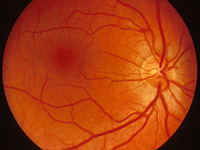Vision Science - 3181
Program Summary
Faculty: Faculty of Science
Contact: Optometry and Vision Science
Campus: Sydney
Career: Undergraduate
Typical UOC Per Semester: 24
Min UOC Per Semester: 6
Max UOC Per Semester: 24
Min UOC For Award: 144
UAC Code: 429740
Domestic Entry Requirements: See Domestic Entry Requirements
International Entry Requirements: See International Entry Requirements
View program information for previous years
Program Description
This degree is designed to develop scientists who can work with ophthalmic industries in the development of new technologies, diagnostic instruments, and patient care options, as well as develop persons who can liaise with ophthalmic practitioners dealing with the patient directly.
Students who complete this degree may be eligible to transfer to the Master of Clinical Optometry degree, see progression rules below.
Program Objectives and Graduate Attributes
At the end of the degree graduates will have:
- Articulate broad and coherent disciplinary theoretical and technical knowledge in Vision Science and Optometry and their areas of practice.
- Demonstrate an awareness of national and international issues relevant to Vision Science and the Optometry profession.
- Use enquiry-based learning and demonstrate analytical skills in the review, consolidation and synthesis of knowledge in Vision Science and Optometry.
- Effectively communicate information in both oral and written formats.
- Work effectively with others.
- Apply knowledge and principles in Vision Science and Optometry to work in Ophthalmic Industry.
- Apply enquiry-based learning and analytical skills to adapt knowledge and skills in Vision Science and Optometry.
Program Structure
Semester 1
- BABS1201 Molecules, Cells and Genes (6 UOC)
- MATH1031 Mathematics for Life Sciences (6 UOC) or MATH1131 Mathematics 1A (6 UOC)* or MATH1141 Higher Mathematics 1A (6 UOC)*
- VISN1111 Geometrical and Physical Optics (6 UOC)
- CHEM1031 Higher Chemistry A: Atoms, Molecules and Energy (6 UOC)
Semester 2
- CHEM1829 Biological Chemistry for Optometry Students (6 UOC)
- VISN1101 Seeing the world: Perspectives from Vision Science (6 UOC)
- VISN1221 Visual Optics (6 UOC)
- PHYS1111 Fundamentals of Physics (6 UOC) or PHYS1121 Physics 1A (6 UOC) or PHYS1131 Higher Physics 1A (6 UOC)
Semester 1
- ANAT2111 Introductory Anatomy (6 UOC)
- OPTM2133 The Clinical Environment (6 UOC)
- PHSL2101 Physiology 1A (6 UOC)
- VISN2111 Ocular Anatomy and Physiology (6 UOC)
- OPTM2233 Optical Dispensing (6 UOC)
- PHSL2201 Physiology 1B (6 UOC)
- VISN2211 Function of the Visual System (6 UOC)
- General Education (6 UOC)
Semester 1
- General Education (6 UOC)
General Education Requirements
Academic Rules
- Students enrolled in the Bachelor of Vision Science as a single or dual degree must complete a minimum of 144 UOC for the award of the degree
- Students must follow the program of study as outlined in this Handbook and defined under the Program Structure above.
- Students must complete 12 UoC of General Education in accordance with the UNSW rules for General Education. Any course defined as a 'Science' course in Table 1 of the 3970 Bachelor of Science {link} program cannot be taken as General Education. Additionally, GENS courses cannot count as General Education for Science students. Any exceptions to these rules must be approved by the Associate Dean (Academic Programs) or nominee.
- No student may commence level II courses until 48 UOC of level I courses have been successfully completed.
- Students may commence level III courses upon successful completion of 48 units of credit of level II courses.
- Study Load: This is a three-stage full-time program. In any one session, students must enrol in a full study load of 24 UOC in accordance with the requirements of the program. Only in exceptional circumstances will students be allowed to enrol in a reduced program for a stage.
Fees
Assumed Knowledge
Progression
Students who complete the Bachelor of Vision Science may be eligible for admission into the Master of Clinical Optometry via two pathways.
Direct pathway: Entry into the dual award 3182 Bachelor of Vision Science/Master of Clinical Optometry. Students must maintain an overall CREDIT average (65%) at the end of the Bachelor of Vision Science component of the program to progress to the Master of Clinical Optometry. Students who do not meet this requirement are expected to exit the program with a Bachelor of Vision Science.
Alternative pathway: Bachelor of Vision Science students not enrolled in the above mentioned dual award program (direct entry pathway) may apply for alternative entry into the Master of Clinical Optometry at the end of their degree subject to a number of conditions.
Progression into the Master of Clinical Optometry will be a competitive process that is based on academic performance. To be considered for entry into the Master of Clinical Optometry, students must maintain at least an overall CREDIT average (65% WAM) in the Bachelor of Vision Science. However, completion of a Bachelor of Vision Science does not guarantee a place in the Master of Clinical Optometry as only a limited number of places will be available. Students who are unsuccessful in obtaining a place in the Master of Clinical Optometry are expected to Graduate with a Bachelor of Vision Science or may wish to apply for the Science honours program (see below).
Bachelor of Vision Science (3 years, 144 UOC) ----> Science Honours (4500, Vision Science stream) 1 year, 48UOC
Students who complete the Bachelor of Vision Science may be eligible for admission into the Science Honours program (4500, Vision Science stream). To be considered for entry into Science Honours students must have at least an overall CREDIT average (65% WAM) in the Bachelor of Vision Science.
Future Pathways









